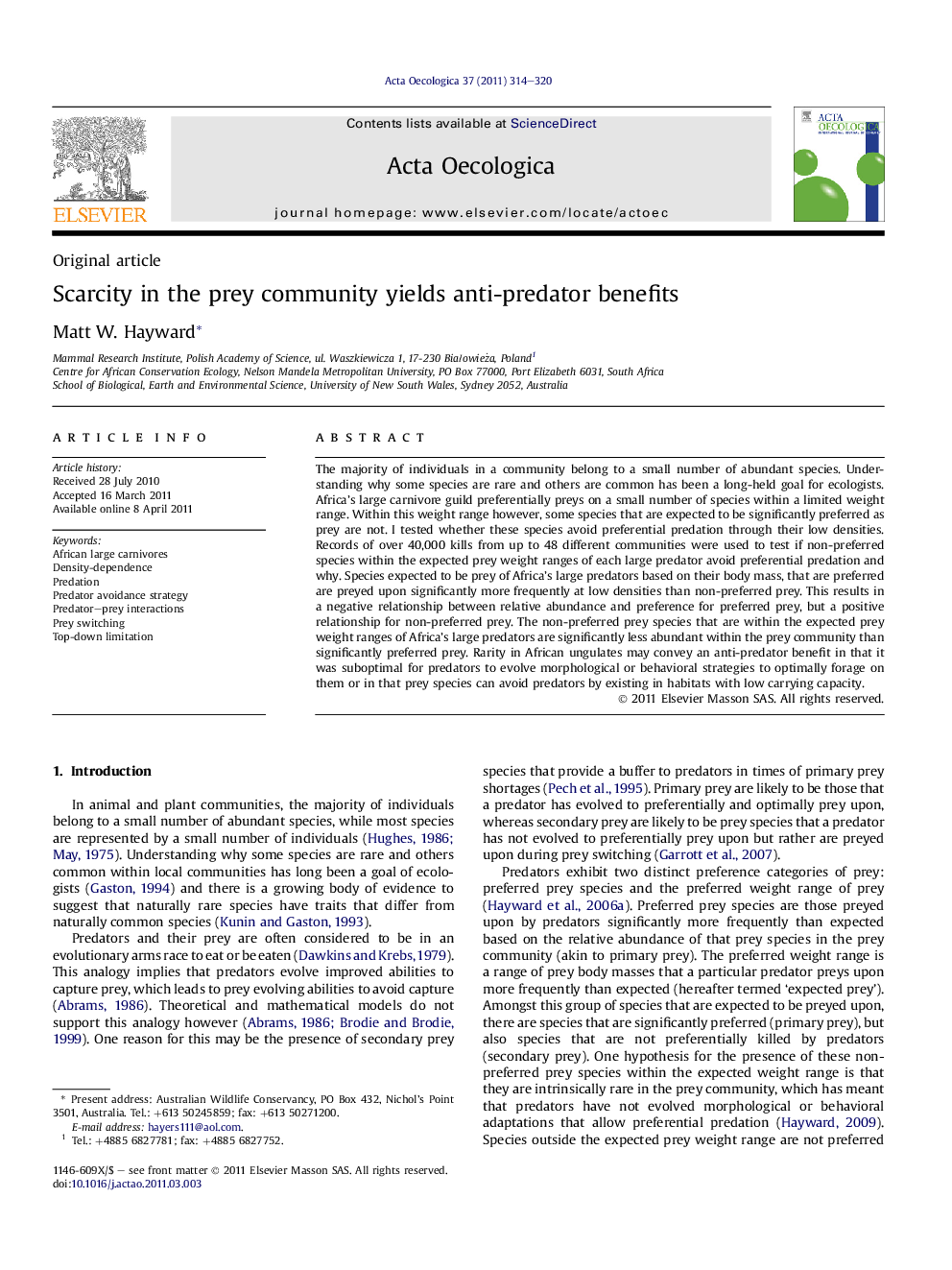| Article ID | Journal | Published Year | Pages | File Type |
|---|---|---|---|---|
| 4381502 | Acta Oecologica | 2011 | 7 Pages |
The majority of individuals in a community belong to a small number of abundant species. Understanding why some species are rare and others are common has been a long-held goal for ecologists. Africa’s large carnivore guild preferentially preys on a small number of species within a limited weight range. Within this weight range however, some species that are expected to be significantly preferred as prey are not. I tested whether these species avoid preferential predation through their low densities. Records of over 40,000 kills from up to 48 different communities were used to test if non-preferred species within the expected prey weight ranges of each large predator avoid preferential predation and why. Species expected to be prey of Africa’s large predators based on their body mass, that are preferred are preyed upon significantly more frequently at low densities than non-preferred prey. This results in a negative relationship between relative abundance and preference for preferred prey, but a positive relationship for non-preferred prey. The non-preferred prey species that are within the expected prey weight ranges of Africa’s large predators are significantly less abundant within the prey community than significantly preferred prey. Rarity in African ungulates may convey an anti-predator benefit in that it was suboptimal for predators to evolve morphological or behavioral strategies to optimally forage on them or in that prey species can avoid predators by existing in habitats with low carrying capacity.
